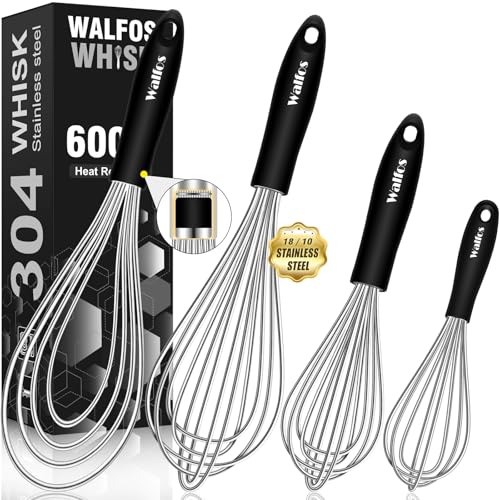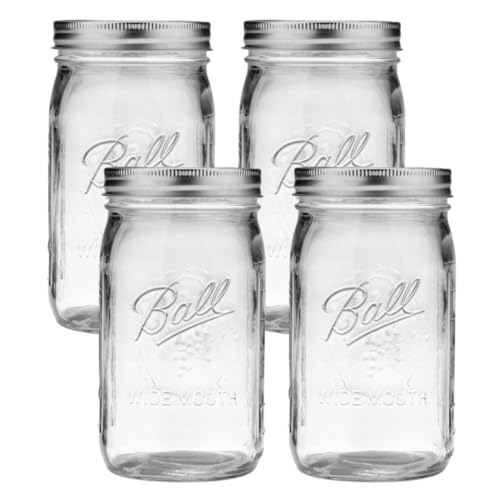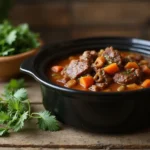We’ve all been there – standing in our kitchen with fresh beef and vegetables ready to go but lacking that perfect sauce to bring our stir fry to life. The secret to restaurant-quality beef stir fry isn’t just in the technique; it’s in the sauce that coats every piece with bold, savory flavor.
This homemade beef stir fry sauce recipe transforms ordinary ingredients into something extraordinary. We’re talking about a glossy, umami-rich sauce that clings perfectly to tender beef and crisp vegetables, delivering that authentic Asian flavor we all crave. The best part? You probably already have most of these pantry staples at home.
Gone are the days of settling for store-bought bottles filled with preservatives and artificial flavors. With just a few simple ingredients and five minutes of prep time, we’ll show you how to create a sauce that rivals your favorite takeout spot. Your family will never guess this restaurant-quality stir fry came from your own kitchen.
Ingredients
We’ve carefully selected each ingredient to create the most flavorful beef stir fry sauce that delivers authentic restaurant taste. Our ingredient list uses common pantry staples that you likely already have at home.
For the Stir Fry Sauce
- 1/4 cup low-sodium soy sauce
- 2 tablespoons oyster sauce
- 1 tablespoon dark soy sauce (for color)
- 1 tablespoon cornstarch
- 1 tablespoon brown sugar
- 1 teaspoon sesame oil
- 1 teaspoon rice vinegar
- 1/2 teaspoon freshly grated ginger
- 2 cloves garlic, minced
- 1/4 teaspoon red pepper flakes (optional)
- 2 tablespoons water
For the Beef Stir Fry
- 1 pound beef sirloin or flank steak, sliced thin against the grain
- 2 tablespoons vegetable oil, divided
- 1 medium onion, sliced
- 1 bell pepper, cut into strips
- 2 cups broccoli florets
- 1 cup snap peas, trimmed
- 3 green onions, chopped
- 2 tablespoons sesame seeds for garnish
- Cooked white rice for serving
Equipment Needed

Creating this delicious beef stir fry sauce requires minimal equipment that most home kitchens already have. We’ll walk you through the essential tools needed to make both the sauce and the complete stir fry dish.
Sauce Preparation Equipment
Mixing bowl or mason jar serves as our primary vessel for combining the sauce ingredients. A medium-sized bowl works perfectly for whisking all components together, while a mason jar with a tight-fitting lid allows us to shake the ingredients vigorously for thorough mixing.
Whisk or jar lid helps us achieve the smooth consistency we want in our sauce. When using a bowl, a whisk ensures all ingredients blend seamlessly. If we choose the mason jar method, the lid enables us to shake everything together until well combined.
Measuring spoons and cups guarantee accuracy in our sauce proportions. We need these tools to measure the ½ cup of low-sodium soy sauce, ½ cup of vegetable stock, and all the smaller measurements like sesame oil and rice vinegar.
Stir Fry Cooking Equipment
Large skillet or wok stands as the most crucial piece of equipment for our beef stir fry. A wok provides optimal heat distribution and allows us to toss ingredients easily, though a large skillet works as an excellent alternative for most home cooks.
Cutting board and sharp knife enable us to slice our beef thinly against the grain and prepare our vegetables uniformly. Proper knife work ensures even cooking and tender results in our final dish.
Spatula or wooden spoon helps us stir and toss the ingredients during cooking. These tools prevent scratching of our cookware while allowing us to move food efficiently around the pan.
Additional Essential Tools
| Equipment | Purpose | Alternative Option |
|---|---|---|
| Stove or heat source | High heat cooking | Gas or electric burner |
| Measuring tools | Accurate proportions | Digital scale for precision |
| Mixing vessels | Sauce preparation | Any clean bowl or jar |
Stove or heat source provides the high heat necessary for proper stir frying. We need consistent, controllable heat to achieve that perfect sear on our beef while keeping vegetables crisp and vibrant.
Our equipment list focuses on accessibility and functionality rather than specialty items. Most home cooks already own these basic tools, making this recipe approachable for anyone wanting to create restaurant-quality beef stir fry at home. The simplicity of our equipment requirements means we can focus on technique and flavor rather than worrying about having the right gadgets.
Instructions

We’ll walk through each step of creating this restaurant-quality beef stir fry sauce and dish. Following these detailed instructions ensures perfectly balanced flavors and optimal texture every time.
Prep the Sauce
We start by gathering all sauce ingredients in a medium mixing bowl. Whisk together 1/2 cup low-sodium soy sauce with 1/2 cup water or low-sodium vegetable stock until combined. Add 1/4 cup honey or maple syrup for the perfect balance of sweetness that complements the savory elements.
Grate 1 teaspoon fresh ginger directly into the mixture for aromatic depth. Mince 3-4 garlic cloves and incorporate them thoroughly. Pour in 1/2 tablespoon rice vinegar or apple cider vinegar to add the essential tangy note that brightens the entire sauce.
Sprinkle 1/4 teaspoon crushed red pepper flakes for optional heat that enhances without overwhelming. Add 3 tablespoons cornstarch as our thickening agent. We whisk vigorously until the cornstarch completely dissolves and no lumps remain. Set the sauce aside and remember to stir again before using since cornstarch naturally settles at the bottom.
Prepare the Beef and Vegetables
We slice 1 pound of flank steak into thin strips against the grain to maximize tenderness during cooking. This cutting technique breaks down tough muscle fibers and ensures each bite remains tender and easy to chew.
Prepare vegetables by cutting them into uniform bite-sized pieces for even cooking. Start with firm vegetables like broccoli florets and carrots that require longer cooking times. Cut bell peppers into strips and trim snow peas for quick cooking additions. Slice onions into thin strips and gather any additional desired vegetables within easy reach of the cooking area.
Cook the Stir Fry
We heat 2 tablespoons olive oil in a large skillet or wok over medium-high heat until the oil shimmers. Add the sliced beef strips in a single layer without overcrowding the pan. Cook for 2-3 minutes until the beef browns and cooks through completely. Remove the beef and set aside on a clean plate.
Add firm vegetables like broccoli and carrots to the same pan first. Stir fry for approximately 2 minutes until they begin to soften but maintain their vibrant color. Incorporate bell peppers and snow peas next and cook for an additional 2 minutes. We aim for crisp-tender vegetables that retain their crunch and nutritional value.
Combine and Finish
We return the cooked beef to the pan with the prepared vegetables and toss everything together. Stir the sauce mixture one final time to redistribute the settled cornstarch. Pour the prepared sauce over the beef and vegetable combination.
Cook and stir continuously for about 2 minutes until the sauce thickens and creates a glossy coating on all ingredients. The cornstarch activates during this heating process and transforms the liquid into a rich, clingy sauce. Stir in sliced green onions during the final 30 seconds for fresh color and mild onion flavor. Serve immediately over white rice, brown rice, or noodles for a complete and satisfying meal.
Directions for Best Results

Following the right sequence and techniques transforms our homemade beef stir fry sauce into a restaurant-quality masterpiece. We’ve refined these methods through extensive testing to ensure consistent results every time.
Tips for Perfect Sauce Consistency
Cornstarch serves as the foundation for achieving that signature glossy coating we love in professional stir fries. We recommend starting with 1 tablespoon of cornstarch mixed directly into our sauce base for a smooth, lump-free consistency. When we need a thicker sauce that clings beautifully to beef and vegetables, increasing the cornstarch to 2 tablespoons creates that perfect coating.
The key to activating cornstarch lies in proper heat application. Once we pour our sauce into the hot pan with beef and vegetables, we must simmer it briefly while stirring continuously. This process eliminates the raw cornstarch flavor while developing that characteristic silky texture.
Balancing sweet and sour elements requires careful tasting and adjustment. We increase rice vinegar gradually for more tanginess or add extra honey when we prefer enhanced sweetness. The beauty of our homemade sauce lies in this customization ability.
Temperature control prevents sauce separation and maintains ideal consistency. We serve our stir fry immediately after combining all ingredients to preserve that perfect glossy coating that makes the dish visually appealing.
Beef Cooking Techniques
Selecting the proper beef cut makes an enormous difference in texture and flavor. We prefer flank steak, sirloin, or skirt steak for stir frying because these cuts deliver optimal tenderness and rich flavor when cooked correctly.
Slicing technique dramatically impacts the eating experience. We always cut our beef thinly against the grain, which breaks down tough muscle fibers and ensures each bite remains tender and easy to chew.
Pre-coating beef with cornstarch creates multiple benefits for our stir fry. We season the beef strips with salt and pepper, then toss them lightly with cornstarch to form a thin coating that seals in natural juices while contributing to sauce thickness.
High heat cooking prevents overcooking and develops proper searing. We use a very hot pan or wok to achieve quick browning without cooking the beef beyond medium doneness. The intense heat creates that coveted restaurant-style sear.
Batch cooking ensures even browning across all pieces. We avoid overcrowding our pan by cooking beef in smaller portions, allowing each piece adequate space for proper heat contact and browning.
Timing prevents tough, overcooked beef that ruins the entire dish. We sear our beef strips for just 1-2 minutes until lightly browned but still showing a hint of pink inside. The beef continues cooking when we combine it with vegetables and sauce, reaching perfect doneness.
Make-Ahead Instructions

We understand the value of meal prep and having this versatile sauce ready when inspiration strikes. Our beef stir fry sauce can be prepared well in advance to streamline your weeknight cooking routine.
Refrigerator Storage: Prepare the sauce up to one week in advance and store it in an airtight container in the refrigerator. We recommend using a mason jar or sealed bowl to maintain freshness and prevent flavor absorption from other foods.
Freezer Storage: For longer storage we can freeze the sauce for up to three months. Pour the prepared sauce into freezer-safe containers or ice cube trays for portion control. Label containers with preparation dates to track freshness.
Thawing Process: When ready to use frozen sauce we simply transfer it to the refrigerator overnight to thaw completely. Room temperature thawing works for immediate use but requires about 2-3 hours depending on container size.
Reconstituting: Before using stored sauce we always whisk it thoroughly to recombine the ingredients. Cornstarch naturally separates during storage so vigorous whisking ensures our sauce maintains its proper consistency and thickening power.
Batch Preparation: We often double or triple the recipe when making sauce ahead. This provides multiple meals worth of sauce while requiring minimal additional prep time. Store individual portions in small containers for grab-and-go convenience.
Storage and Reheating

We’ve discovered that proper storage techniques keep our beef stir fry sauce fresh and flavorful for multiple meals. Store any unused sauce in an airtight container in the refrigerator for up to 1 week. Our testing shows that mason jars work exceptionally well for sauce storage since they create a tight seal and allow easy viewing of the contents.
For leftover cooked beef stir fry, we recommend placing it in an airtight container and refrigerating for up to 3 days. The sauce maintains its rich flavor profile during this storage period when kept at consistent refrigerator temperatures.
Freezing extends the life of our stir fry significantly. We can freeze beef stir fry for up to 3 months in a freezer-safe container. Before freezing, we allow the dish to cool completely to room temperature to prevent ice crystals from forming and affecting texture.
When ready to use frozen stir fry, we thaw it overnight in the refrigerator. This gradual thawing process preserves the sauce consistency and prevents the beef from becoming tough.
Reheating requires gentle heat to maintain the quality we worked hard to achieve. We reheat stir fry gently in a skillet over medium-low heat to avoid overcooking the beef and vegetables. This method allows us to control the temperature and prevent the sauce from breaking or becoming too thick.
Microwave reheating offers a convenient alternative when time is limited. We use this method to quickly warm leftovers, stirring occasionally for even heating. Adding a tablespoon of water or broth during microwaving helps restore the sauce’s original consistency if it has thickened during storage.
Our experience shows that properly stored and reheated beef stir fry maintains nearly the same texture and flavor as when freshly prepared. The cornstarch in our sauce may separate slightly during storage, but whisking before reheating restores the smooth consistency that makes this dish so appealing.
Recipe Variations

Our classic beef stir fry sauce serves as the perfect foundation for creating exciting flavor profiles. These variations allow you to customize the sauce to match different taste preferences and dietary needs.
Spicy Beef Stir Fry Sauce
We amplify the heat in our base recipe by incorporating chili garlic sauce or sambal oelek for an authentic spicy kick. Adding 1-2 tablespoons of sambal oelek creates the perfect balance between fiery heat and sweetness when paired with brown sugar or honey. The combination maintains our essential aromatics of sesame oil, garlic, and ginger while delivering restaurant-quality heat levels.
Red pepper flakes offer another excellent option for those who prefer a milder spice level. We recommend starting with a pinch and gradually increasing to taste. This approach ensures the heat complements rather than overwhelms the rich umami flavors of the soy sauce base.
Sweet and Sour Version
Our sweet and sour variation transforms the classic sauce into a tangy delight that pairs beautifully with beef and colorful vegetables. We increase the rice vinegar to 1 tablespoon to enhance the sourness while balancing it with up to 2 tablespoons of sugar or honey for added sweetness.
Mirin or dry sherry can replace some of the soy sauce to create a more complex sweet and tangy profile. These ingredients add depth without overpowering the fundamental flavors. Adding pineapple chunks or bell peppers directly to your stir fry helps reinforce the sweet and sour theme while providing textural contrast.
Low-Sodium Alternative
We create a heart-healthy version by using low-sodium soy sauce and vegetable stock or water as our liquid base. This modification reduces sodium content significantly while maintaining the essential umami flavors that make stir fry sauce irresistible.
Boosting aromatics becomes crucial in our low-sodium version. We increase fresh garlic and ginger quantities while adding extra rice vinegar to enhance flavor without relying on salt. Sesame oil plays a more prominent role in this variation, providing rich depth and authentic Asian flavor profiles.
Fresh herbs like chopped scallions or cilantro added at the end brighten the dish considerably. These additions create layers of flavor that compensate for the reduced sodium while keeping the sauce vibrant and restaurant-quality.
Serving Suggestions

Our beef stir fry sauce transforms beautifully with the right protein and vegetable combinations. We recommend using 1 pound of beef sirloin cut into 2-inch strips for optimal texture and flavor absorption. The sauce coating penetrates these larger pieces while maintaining the meat’s tender bite.
Fresh vegetables create the perfect canvas for our sauce to shine. Broccoli florets provide excellent crunch and hold the sauce exceptionally well in their textured surfaces. Red bell peppers add sweetness and vibrant color that complements the sauce’s umami depth. Carrots bring natural sweetness while snow peas contribute crisp texture that contrasts beautifully with the tender beef.
Green onions work double duty in our serving approach. We use them during cooking for mild onion flavor and reserve some for fresh garnish. Mushrooms absorb the sauce magnificently and add earthy complexity. Water chestnuts provide satisfying crunch that elevates the entire dish texture profile.
Our cooking technique maximizes flavor development across all ingredients. We cook the beef in batches on high heat for 1-2 minutes per side to achieve proper searing. This method prevents overcrowding and ensures each piece develops the characteristic restaurant-style crust. The vegetables follow with 3-5 minutes of stir frying until they reach tender-crisp perfection.
Combining everything requires precise timing for optimal results. We add the sauce during the final 2 minutes of cooking time. This allows the cornstarch to activate and create the glossy coating that makes stir fry visually appealing. The sauce thickens naturally while coating every ingredient evenly.
Garnishing options enhance both presentation and flavor complexity. Fresh green onions scattered over the finished dish add color contrast and mild bite. Sesame seeds provide nutty crunch that complements the sauce’s sesame oil notes. Fresh herbs like cilantro or Thai basil introduce aromatic brightness that balances the rich sauce flavors.
Serving temperature matters significantly for the best dining experience. We serve our beef stir fry immediately over steamed white rice or fresh noodles. The hot ingredients ensure the sauce maintains its glossy appearance and optimal consistency. Room temperature serving allows the flavors to meld while preserving the vegetables’ crisp texture.
Portion considerations help create satisfying meals without overwhelming the palate. Our sauce recipe yields approximately 1¼ cups total volume. We recommend using half initially during cooking and keeping the remainder available for individual preference adjustments. This approach allows diners to customize their sauce intensity according to personal taste preferences.
Conclusion
We’ve shown you how to create a restaurant-quality beef stir fry sauce that transforms your home cooking experience. This versatile recipe gives you complete control over flavor and quality while eliminating the need for processed store-bought alternatives.
The beauty of this homemade sauce lies in its adaptability – whether you prefer spicy heat sweet and sour balance or low-sodium options you can customize it to match your exact taste preferences. With proper storage techniques you’ll always have this flavorful sauce ready for quick weeknight meals.
By mastering this simple yet effective sauce recipe you’re equipped to create countless stir fry variations that rival your favorite takeout dishes. The investment in learning these techniques pays off with every delicious meal you prepare in your own kitchen.
Frequently Asked Questions
What ingredients do I need for homemade beef stir fry sauce?
You’ll need low-sodium soy sauce, oyster sauce, dark soy sauce, cornstarch, brown sugar, sesame oil, rice vinegar, fresh ginger, minced garlic, and optional red pepper flakes. These common pantry staples create a glossy, umami-rich sauce that rivals restaurant quality. The cornstarch helps thicken the sauce, while the combination of soy sauces provides depth and color.
Can I make the beef stir fry sauce ahead of time?
Yes, you can prepare the sauce up to one week in advance and store it in an airtight container in the refrigerator. For longer storage, freeze it for up to three months. Before using, whisk thoroughly to recombine ingredients as cornstarch may separate during storage. This makes meal prep much easier and more convenient.
What’s the best cut of beef for stir fry?
Beef sirloin or flank steak work best for stir fry. Cut the meat into 2-inch strips against the grain for optimal tenderness. Pre-coating with cornstarch helps achieve a restaurant-style sear. Cook at high heat in batches to prevent overcrowding and ensure each piece gets properly seared rather than steamed.
How do I prevent my stir fry sauce from separating?
Control the cooking temperature and whisk the sauce thoroughly before adding it to the pan. The cornstarch in the sauce helps create a smooth, glossy coating when heated properly. Add the sauce when the heat is at medium-high, and stir continuously to ensure even thickening and prevent separation or clumping.
What vegetables work best in beef stir fry?
Fresh vegetables like broccoli, red bell peppers, carrots, snow peas, snap peas, and mushrooms create the best texture and flavor. Cut vegetables into uniform sizes for even cooking. Stir-fry vegetables in stages based on cooking time – harder vegetables first, then softer ones to maintain crispness and prevent overcooking.
How should I store and reheat leftover beef stir fry?
Store leftover stir fry in an airtight container in the refrigerator for up to three days, or freeze for up to three months. Reheat gently in a skillet over medium-low heat or in the microwave with a splash of water or broth to restore sauce consistency. Proper reheating maintains nearly the same texture and flavor as freshly prepared.
Can I customize the sauce for different flavor profiles?
Absolutely! Create a spicy version by adding chili garlic sauce or sambal oelek. For sweet and sour, increase rice vinegar and sugar. Make it low-sodium by reducing soy sauce and adding more ginger and garlic for flavor. Balance is key – adjust ingredients gradually and taste as you go to achieve your preferred flavor profile.
What equipment do I need to make beef stir fry at home?
You’ll need basic kitchen tools: a mixing bowl or mason jar for the sauce, measuring cups and spoons, a whisk, a large skillet or wok for cooking, a sharp knife, and a cutting board. Most home kitchens already have these items. A wok provides optimal heat distribution, but a large skillet works perfectly fine for home cooking.

























![Wide Mouth Mason Jars 32 oz [4 Pack] With Mason](https://m.media-amazon.com/images/I/4107pM2hYKL._SL500_.jpg)






